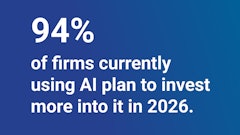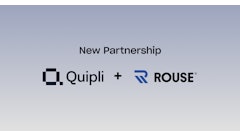Greg put down the phone. It was a strange call. Mega Package had called to ask him to bid on a training program for the first line supervisors. Greg's training company had done this work before but not a multi-year project training as many as 2,500 front line supervisors in 40 plants across the USA. There were seven other international training companies bidding. With a $10-million dollar a year training company, he was the only little guy being asked to bid. This was a mandate worth millions of dollars, and he had never done an assignment larger than a few hundred thousand dollars at a time.
This is a situation many mid-sized companies find themselves in when they take on their first mega contract. Growing the reach and expertise of your company is the goal of many organizations, but under-pricing the first mega project is one of the biggest mistakes to avoid. A large multi-year project is often more complex and, hence, more expensive to manage because of the many variables. The more people involved, the more planning and re-planning is needed. This means the mid-sized company often has to add more overheads to manage the process.
The peaks and valleys of staffing that come with larger contracts also creates havoc with the billing and cash flow for the mid-sized company. Larger companies want more choice, and unless the mid-sized company can offer a wider range of modules at different price points to cover the different levels of work and value provided, the whole process can quickly become unprofitable as well as unmanageable.
As Greg brainstormed the approach with his team he realized in needed some help. He knew this move would be dangerous for his company unless he developed a better understanding of what was involved in undertaking larger projects. He called his buddy Tom, a master strategist in helping mid-sized companies, especially with pricing strategy difficulties. After discussing the opportunity, Tom gave him the following advice:
- Put together a list of the services your company is offering now, and in a parallel column list the price you charge for each of these services. Greg spent some time listing his services. He had half-day, full-day and multi-day packages that could be delivered in small or large groups. He also had modules on leadership self-awareness, the leadership phases, how to conduct effective meetings, diagnosing and managing performance gaps and communication effectiveness, as well as a number of add on services.
- Create a second column to list the bare-bones price for each service. Greg then went through his list of services to calculate the bare bones service and price he could offer for a client in each case. This exercise was not easy; it took a few iterations until he came up with bare bones prices for each service.
- Create a third column that lists prices that are at least 10 times the bare-bones price. Tom had warned Greg that large mandates are more expensive to provide than smaller mandates. You need to build in ways to cater to greater variability in audiences, needs and demands that add to your costs to deliver these services. The way to accommodate this variability is by matching the different value needs to different pricing. For Greg, his first module was now listed as $70 for bare bones and on Tom's advice of using ten times as his multiplier he listed the deluxe version at $700.
- In a fourth column list the extra value you can provide, so that as people pay more, they get more value. Greg now looked at the $70 and the $700 versions of module one and challenged his team to think what they could add to the $70 module to make it worth $700. Tom used the example of, on airplanes, there were some folks who had paid $300 and some who had paid $3,000 for the same flight, but they were not all getting the same level of service.
- Take these new service offerings and wrap them into different ways to make it easy for clients to select. Greg and his team realized they could offer the services per person, per group or with different delivery channels (Webinars, onsite training etc.).
- Do not quote a total price. Greg provided a schedule of modules (from basic price to 10 times that price for deluxe versions) for Mega Package to select. This approach would be very profitable for Greg's company and he hoped Mega Package would like the idea as they could secure customized training for staff in a way that was very flexible. Mega Package would also not need to get their legal department involved, as they were not signing a multi-million dollar contract. They were purchasing modules that would be customized for their needs at price points per module that were well below the levels that required senior management or board approval. Greg was hoping this approach would mean Mega Package could give the go ahead for the first few modules without delay and pay for each module in advance.
- Finally, get the first line supervisors to apply the training to performance measures in the company. Greg included an offer to present a few Supervisor Recognition Certificates to supervisors who applied the training in ways that resulted in better performance at Mega Package. He hoped the supervisors valued the opportunity for recognition and that management would see how this was the link to get alignment to their performance measures. Greg also hoped this would link to his bottom line!
It is not unusual for the senior management of a large public company to be replaced within a few years and therefore it is important that mid-sized companies make sure that if a large multi-year contract is suddenly cancelled that they are not out of pocket or do not have to face years of legal battles with a large company to get paid. Finding ways to get paid as you go, and providing incentives to get your services accepted and supported at all levels in the company reduces the risk it will be cancelled.
A few weeks later Greg got the call: he had won the contract! Greg quickly shared the good news with his team and sent a quick text message to Tom: "Just got the magic phone call saying that I have won the contract! Thanks for your coaching. I expect the eventual value will be between $1M and $3M."
Many mid-sized companies think they have a pricing problem - especially when tackling a larger contract. Most times the real problem is surfacing the value the client is looking for, dividing it into modules or other bite sized chunks and pricing each chunk so it can be delivered in a range of ways from bare bones to deluxe. Using these steps can help your company make the jump the to the big leagues.



















